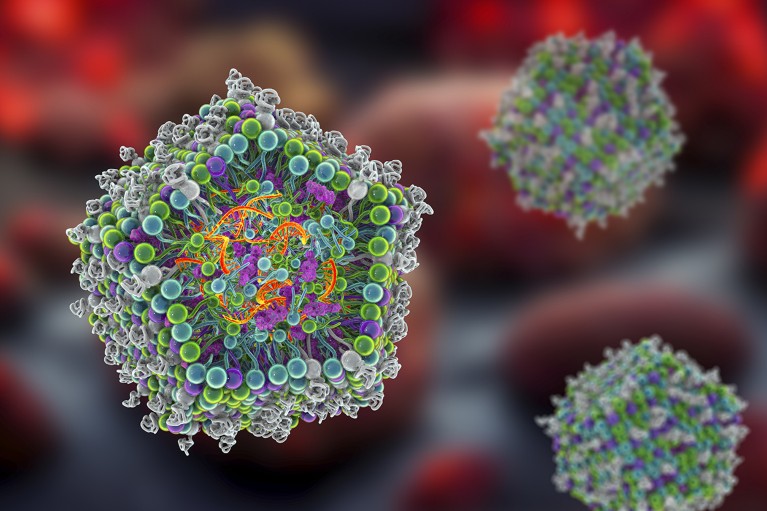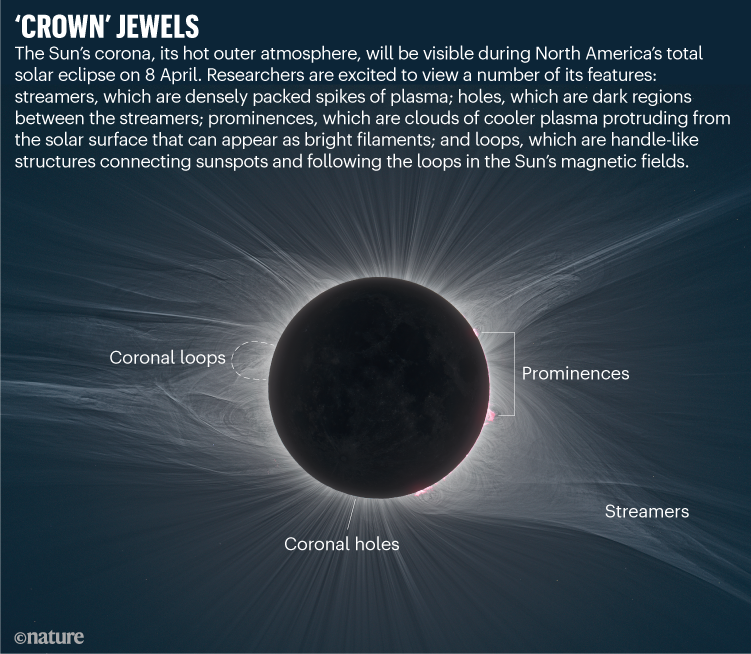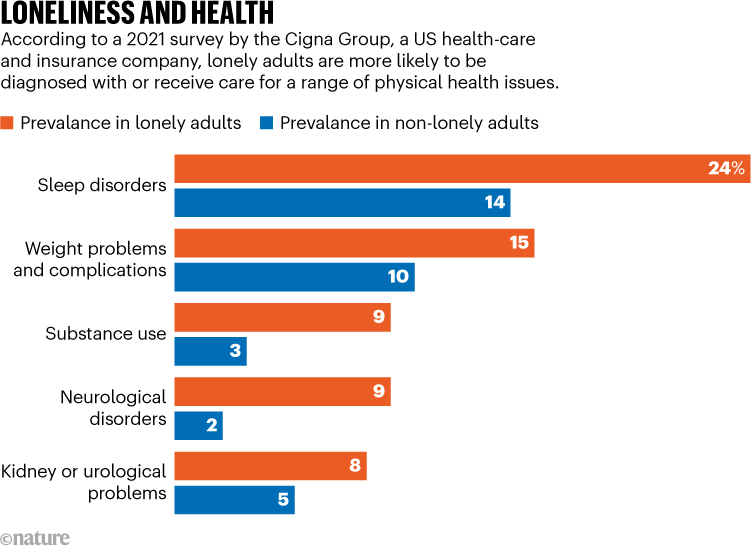[ad_1]
Hello Nature readers, would you like to get this Briefing in your inbox free every day? Sign up here.

A new drug consists of pieces of mRNA encased in a fatty envelope (artist’s impression).Credit: Kateryna Kon/SPL
A therapy that extends mRNA technology beyond vaccines has shown early success in treating a rare genetic disease, propionic acidaemia, that prevents people from processing certain nutrients. The treatment — made by US pharma company Moderna, and known as mRNA-3927 — gives those treated a working copy of the instructions needed to make an enzyme that is missing in people with the disease. In a small clinical trial, half of the participants receiving the therapy saw their risk of life-threatening episodes decrease by 70–80%. But the drug also produced side effects and required frequent infusions.
Taiwan has been hit with the biggest earthquake the island has seen in 25 years. The magnitude-7.4 quake killed several people, flattened buildings and triggered landslides. But it could have been much worse: in the past two decades, Taiwan has ramped up its efforts to prepare for quakes. It has an early warning system that sends alerts seconds after an earthquake strikes, and many buildings have been upgraded. Taiwan is situated in one of the most seismically active regions in the world and a magnitude-7.6 tremor in 1999 resulted in more than 2,400 deaths.
A fertility treatment that has been used for 45 years is back in Alabama after being halted in February by the state’s Supreme Court. The court ruled that embryos created using in vitro fertilization (IVF) have the same rights as children, but a new state law in Alabama that protects clinics from legal fallout has allowed IVF treatments to resume. US clinicians and scientists who are working with human embryos are not totally reassured and fear that they will face an increasing number of legal and constitutional challenges. “From a researcher’s perspective, there’s reason to be worried,” says Hank Greely, director of the Center for Law and the Biosciences at Stanford University.
Researchers have identified gut bacteria that can transform artery-clogging cholesterol into a more harmless form. In previous work, the authors showed that a bacterial enzyme called ismA can metabolize cholesterol into coprostanol, a lipid that is excreted instead of absorbed by the body. They have now identified gut bacteria, including several Oscillibacter species, that correlate with lower cholesterol levels in people. These species could also metabolize cholesterol in lab experiments. Whether these bacteria can directly influence blood cholesterol in people needs to be confirmed, but if they could be delivered to the right place in the gut, it might lead to new treatments.
Infographic of the week

Source: Nature adaptation from image provided by Nicolas Lefaudeux
Features & opinion
Heart disease, depression, dementia and even early death have all been linked to loneliness. According to a 2023 poll, around one-quarter of adults worldwide feel very or fairly lonely, with twice as many young people reporting loneliness as the elderly. Early results from neuroscience suggest that loneliness might alter aspects of the brain, such as the connections between neurons and the volume of grey matter. Links are also emerging between loneliness and how the brain processes feelings of stress, motivation or reward.

Source: The Cigna Group
Public-health researcher Kelly Cobey wants the research community to move away from narrow assessment metrics such as papers in high-impact journals. As co-chair of the Declaration On Research Assessment, Cobey firmly believes in using ‘narrative’ CVs for job applications, promotions and funding, and yet she struggles to write one herself. “Researchers need explicit evaluation criteria that help them to write narratives by spelling out how different aspects of the text will be weighted and judged,” writes Cobey. And reform can’t be done on the cheap: it needs investment from the top and input from the research community. An iterative approach will ensure that the new systems are better than those they are replacing.
“Astrophysics is an exercise in incredible experiments not runnable on Earth,” says theoretical physicist Avery Broderick. “And black holes are an ideal laboratory.” What makes black holes appealing to physicists is their extreme simplicity: an extraordinary amount of mass in a ridiculously small space. Black holes also challenge physicists’ ideas about general relativity and quantum mechanics. Astronomers can observe the gravitational waves emitted by colliding black holes, and maybe understand how they deviate from Einstein’s theories.
[ad_2]
Source Article Link



